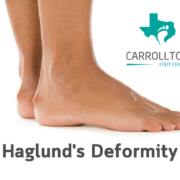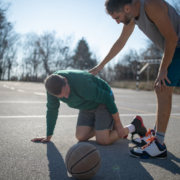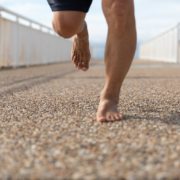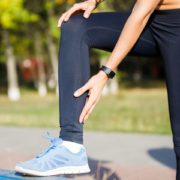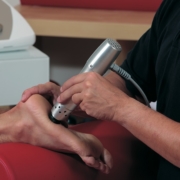Haglund’s Deformity: Debunking the Bony Bump
What is that odd-looking bump near the back of your heel? It could be Haglund’s deformity, often referred to as “pump bump,” which is a bony enlargement located where the Achilles tendon attaches. This prominent bone can cause significant discomfort and irritation, especially when wearing shoes.
Luckily, we at Carrollton Foot Center are here to debunk the bony bump and offer expert insight into all things Haglund’s Deformity. Let’s take a look.
Causes of Haglund’s Deformity
While the exact cause is often unclear, several factors contribute to the development of Haglund’s Deformity. These include:
- Foot structure: Individuals with high arches or flat feet may be more susceptible.
- Shoe gear: Wearing shoes with rigid backs, such as high heels or tight-fitting footwear, can exacerbate the condition.
- Overuse: Repetitive activities that put stress on the heel, like running or dancing, may contribute to the bony growth.
- Achilles tendon tightness: A stiff Achilles tendon can pull on the heel bone, contributing to the deformity.
Symptoms of Haglund’s Deformity
Individuals with Haglund’s deformity often experience pain and inflammation at the back of the heel, which can worsen with shoe friction. The affected area may also become red, swollen, or blistered.
Prevention
While there’s no guaranteed way to prevent Haglund’s deformity, certain measures can help reduce the risk:
- Proper footwear: Choose shoes that fit well and provide adequate cushioning. Avoid tight-fitting shoes or those with hard backs, and regularly replace worn out shoes.
- Stretching exercises: Incorporate calf stretches into your daily routine to maintain flexibility.
- Orthotics: Custom orthotics can help distribute pressure and alleviate discomfort.
- Weight management: Maintaining a healthy weight can reduce overall stress on the foot and heel.
Treatment
Treatment for Haglund’s deformity focuses on pain relief and inflammation reduction. Non-surgical options include over-the-counter pain relievers, shoe modifications, and physical therapy. For severe cases, cortisone injections or surgery may be considered.
Depending on the severity of your bump, consult with your podiatrist to see which treatment option is the best for you.
Board-certified podiatrist Dr. Naghmeh Lilly Khavari is dedicated to her clients in Carrollton, TX. From ingrown toenails to innovative surgical solutions, she offers a vast array of treatments. Contact Carrollton Foot Center’s office at 469-998-3668 to book an appointment now!

